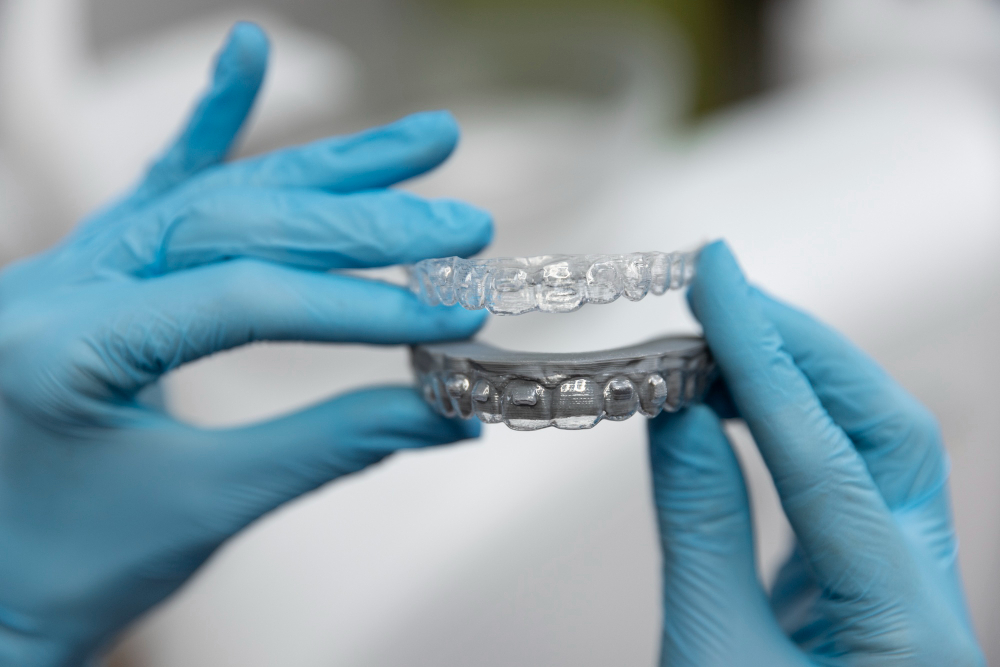Clear Aligners Explained: How They Work and Who They're For

Strong 8k brings an ultra-HD IPTV experience to your living room and your pocket.
Over the past few years, clear aligners have completely changed the field of orthodontics. These almost invisible dental devices present a contemporary approach to metal braces that allows an individual to have easier, less obvious, and more comfortable teeth-straightening methods. So, if you're thinking about orthodontic treatment but are still not quite sure whether you want to have metal braces, clear aligners may be just the thing for you.
What are Clear Aligners?
Clear Aligners are clear, removable trays of BPA-free plastic moulded onto your teeth. Each set is custom-designed using 3-D imaging technology, moving teeth closer to their desired position. Some of the most popular brands in the market for clear aligners are Invisalign, ClearCorrect, and toothsi.
Clear aligners differ from traditional braces in that they don’t have wires or brackets. They provide a sleek, convenient, and often faster way to get that straight smile.
How Clear Aligners Function
Clear aligner treatment usually commences with taking a digital scan or impression of your teeth. Your orthodontist then models a specific treatment plan that indicates step-by-step changes to the positioning of your teeth.
So this is how it works:
- Initial Assessment: A dental professional evaluates whether you are a good candidate through photos, X-rays, or digital scans.
- Custom Design: A set of aligners is created according to your dental scan, which will be processed using software to plot the journey of tooth movement.
- Wearing the Aligners: Depending on your plan, you will wear each aligner for approximately 1-2 weeks. They will typically be worn for about 20-22 hours per day and removed only for eating, brushing, or drinking anything other than water.
- Progressively Moving: Each new set of aligners shifts your teeth a little bit more toward their final alignment.
- Check-ins: Periodic check-ins (virtual or in-clinic) are performed to monitor progress and ensure teeth are moving as expected.
- Retention: After your treatment, you will probably wear retainers to secure the final position of your teeth.
Who Can Use Clear Aligners?
Clear aligners suit the majority of people. However, they do not benefit all types of orthodontic cases. They are most useful for mild to moderate alignment problems, including the following:
- Crowded teeth
- Space between teeth
- A minor overbite or underbite
- Crossbite
- Open bite
- Recurrence following orthodontic treatment
Who are the best candidates?
- Teenagers and Adults: Most aligner brands provide versions specifically aimed at teens and adults. Options specific for teens tend to offer some feature to track time in wear and enable teeth that are erupting to be taken into account.
- Those Seeking Concealed Treatment: Clear aligners are the first choice for professionals, students, and anyone wanting a less visible alternative to metal braces.
- On-The-Go: Clear aligners require fewer visits to the dentist than braces, which can be very convenient for people with very packed schedules.
Not Ideal For
- Those With Major Bite Problems or Jaw Misalignments
- People Who Have a Hard Time Wearing Them As Required
- Children, Unless Especially Cleared
- Individuals With Dental Bridges or Implants in the Treatment Area
Benefits of Clear Aligners
Clear aligners have a great number of advantages:
- Aesthetic: Virtual invisibility makes them ideal for image-conscious users.
- Comfort: Compared with metal brackets, smooth plastic trays cause less irritation.
- Convenience: Easy removal during meals and for oral hygiene purposes.
- Predictability: Advanced imaging has already shown the expected results even before starting.
- Fewer Clinic Visits: Most check-ups can be done virtually and/or infrequently.
What Needs to Be Taken into Consideration Before Getting Clear Aligners?
Though they work well, clear aligners demand perceived discipline. Not wearing them as prescribed might prolong the treatment or hamper results. Millions of simple to moderate cases can use clear aligners; however, stubborn dental issues may still need headgear or other surgical approaches.
Aligners usually cost parallel to or slightly above traditional braces, depending on the brand and complexity of each individual case. Almost every provider of aligners provides easy EMI plans to lessen the financial burden.
Final Thought
Clear aligners made orthodontic treatment less scary and accessible to more people than ever before. Their almost invisible, comfortable, convenient option has made it easy for people to straighten their teeth without the hassle of conventional braces. Much, however, depends upon compliance and on choosing a qualified provider to assist the patient during the journey.
Consult with your doctor or orthodontist if you want to consider using clear aligners. He or she shall determine if you are a good candidate. With proper care and personal commitment, a straighter, healthier smile is just a few aligners away.
Note: IndiBlogHub features both user-submitted and editorial content. We do not verify third-party contributions. Read our Disclaimer and Privacy Policyfor details.


